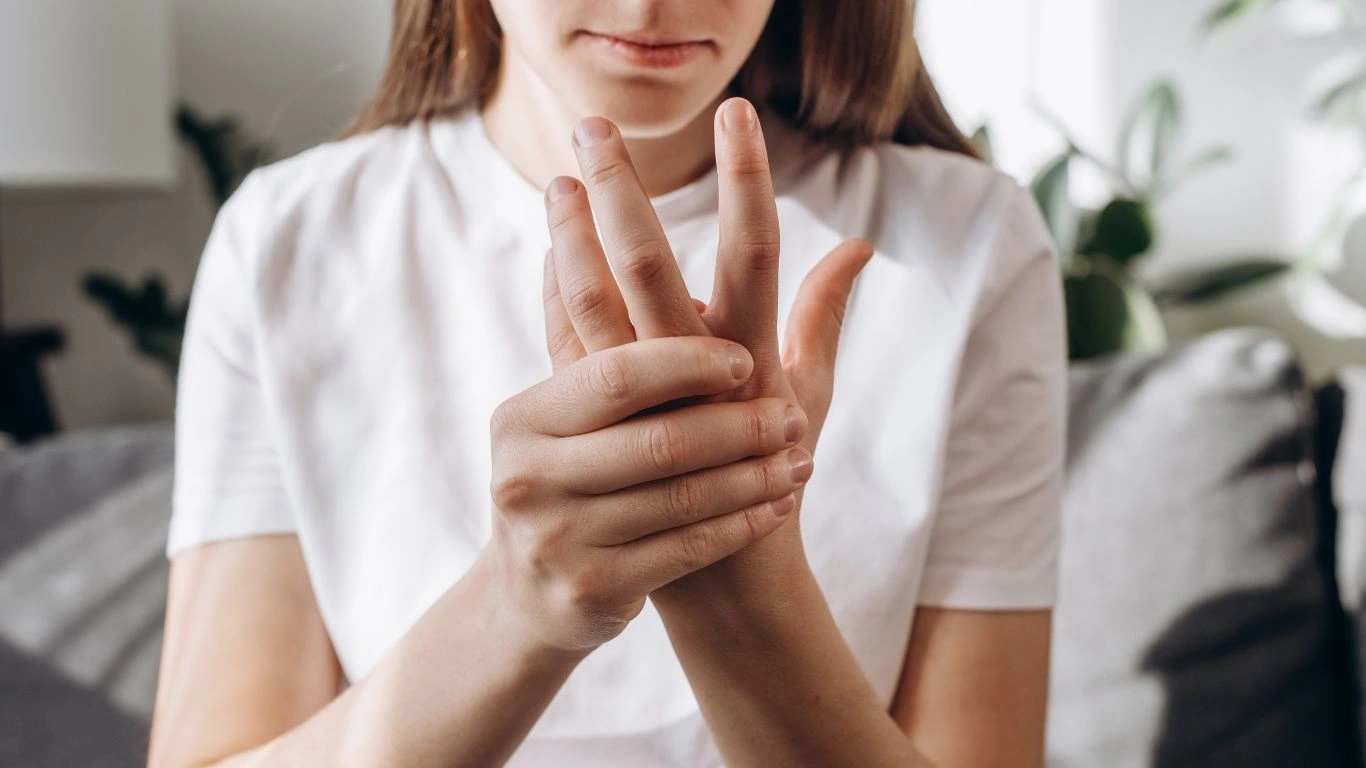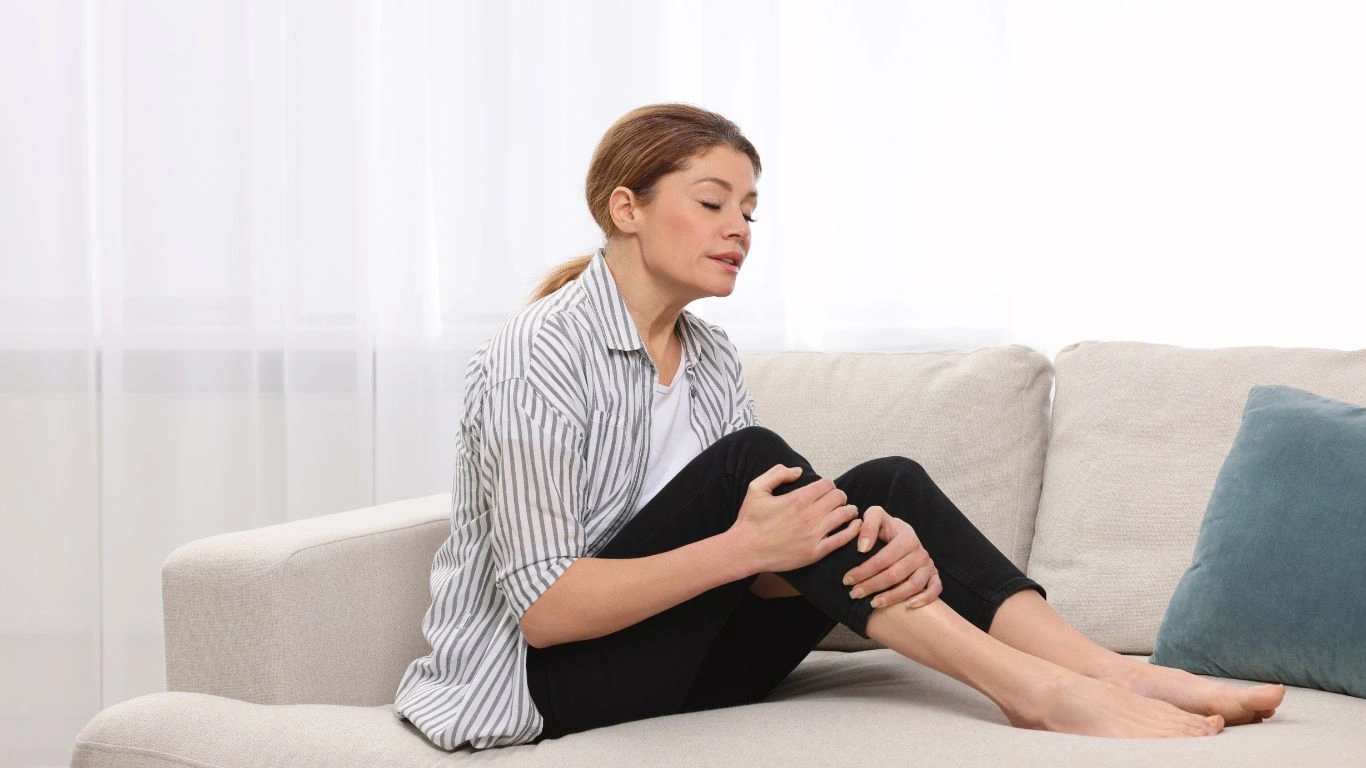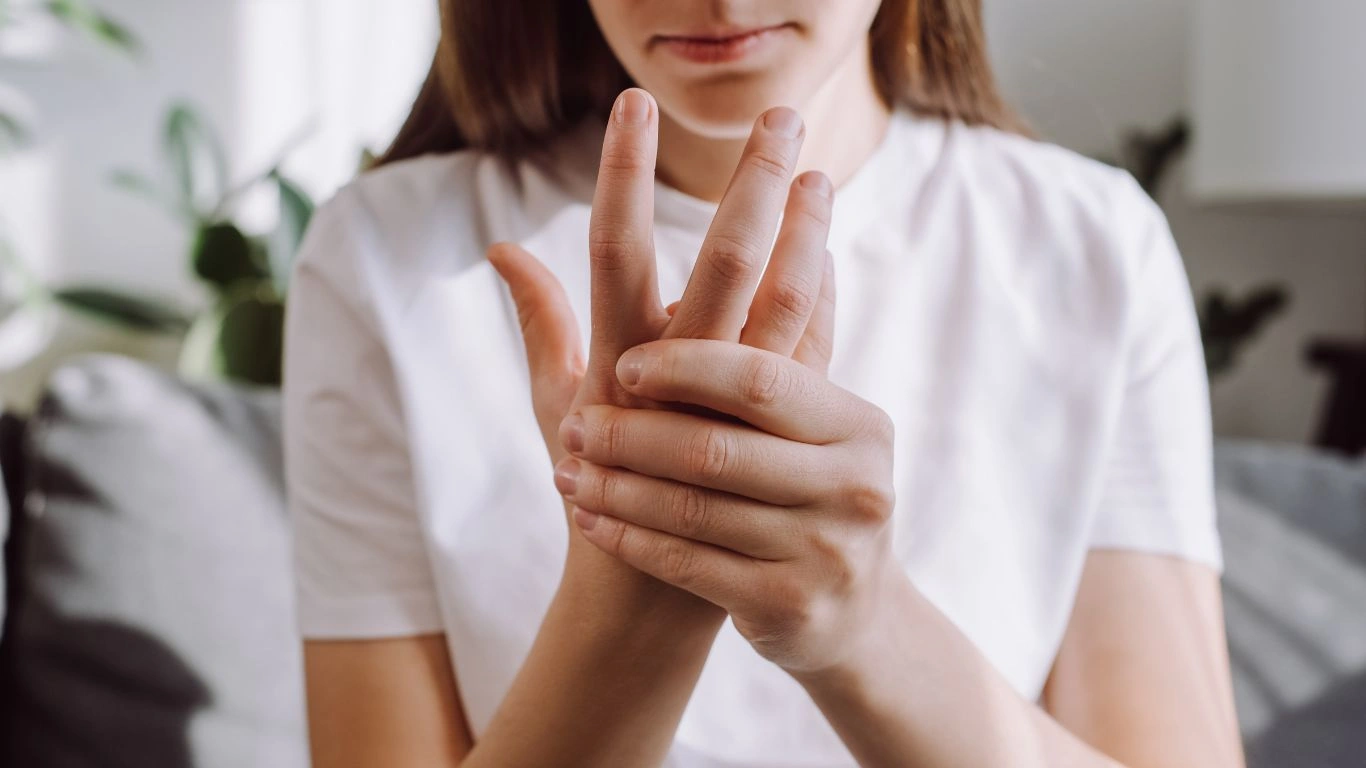Best Morning Routines for Rheumatoid Arthritis Relief That Actually Work
Living with rheumatoid arthritis and finding the best morning routines for pain relief has honestly been one of the biggest game-changers not just for my patients, but for me personally as a Rheumatology Nurse Practitioner. I’ve seen firsthand how those early hours can either set you up for a manageable day or make everything feel ten times harder. Over the years, working closely with people from all walks of life, I’ve picked up some pretty incredible strategies that make mornings less about struggle and more about strength. Let’s dive into how you can take back control, one morning at a time.
Why Morning Matters When You Have Rheumatoid Arthritis

Ever noticed how the stiffness seems to be at its worst right after you wake up? You’re definitely not imagining things. Morning stiffness is one of the hallmark symptoms of RA (that’s what we call rheumatoid arthritis in the clinic). It can make getting out of bed feel like climbing Mount Everest without coffee…or shoes.
From my years working in rheumatology, I’ve learned that understanding *why* mornings are tough gives you the upper hand. Overnight, your joints aren’t moving much, leading to inflammation pooling around them like an unwanted houseguest. This buildup triggers the stiffness and pain that greets you with the sunrise.
But the good news? Building the right morning routine can help you kick RA where it hurts — gently but firmly.
Designing the Best Morning Routines for Pain Relief

Start With Gentle Movements
I always recommend starting slow. Trust me, your body will thank you later. A lot of my patients (and yep, even me on my tougher mornings) benefit from a few minutes of gentle bed stretches before even setting a foot on the floor.
- Roll ankles and wrists in slow, easy circles.
- Do light neck rolls — imagine tracing a circle with your nose.
- Gently hug your knees to your chest one at a time to loosen your hips and back.
Think of it like telling your joints, “Hey, it’s time to wake up… but no rush!”
Heat Therapy Before You Get Moving
When I first started suggesting heat therapy to my patients, some were skeptical — until they tried it. Applying gentle heat in the morning can ease that stuck, achy feeling like magic.
- Use a heating pad across your lower back or shoulders for about 10–15 minutes.
- Take a warm (not hot!) shower to help loosen muscles and joints.
- Keep a microwaveable heat pack by your bedside for easy access — it’s a serious game-changer on chilly mornings.
Personally, I swear by my cozy heated blanket. It’s like getting a warm hug first thing — pure bliss.
Mindful Mornings: The Mental Side of Pain Relief

Breathing and Visualization
Living with rheumatoid arthritis taught me that pain isn’t just a physical thing — it’s mental too. On my worst days, taking five minutes to just *breathe* makes all the difference. No fancy tools needed. Just you, your breath, and a few minutes of peace.
Here’s a quick breathing exercise I share with my patients (and do myself):
- Inhale deeply through your nose for 4 counts.
- Hold the breath gently for 4 counts.
- Exhale slowly through your mouth for 6 counts.
- Repeat for 5–10 rounds while imagining warmth flowing into your joints.
It’s simple, but wow, it works. Pair it with a positive visualization, like picturing your joints bathed in healing light, and you’re not just surviving your morning — you’re owning it.
Choosing Positivity (Even When It’s Hard)
Honestly, not every morning is sunshine and rainbows — and that’s okay. Some days, the pain is stubborn. But reminding yourself that you have a plan (and tools) makes a huge difference. I always tell my patients: “Even small wins count.” Stretching for two minutes longer, getting out of bed with less help, making your own coffee — it’s all progress. And it all matters.
Fueling Your Body the Right Way After Waking Up

Alright, so once you’ve gotten your joints moving and your mind a little calmer, it’s time to think about what you’re putting into your body. And no — grabbing a sugary donut on the go isn’t exactly doing your joints any favors (although trust me, some mornings the temptation is very real!).
From what I’ve seen in clinic and in my own daily life, eating the right foods right after you wake up can actually impact your rheumatoid arthritis and best morning routines for pain relief more than you might expect. A good breakfast isn’t just about filling your belly; it’s about fighting inflammation from the inside out.
Anti-Inflammatory Breakfast Ideas
- Oatmeal topped with berries and walnuts – loaded with fiber and omega-3s.
- Greek yogurt with chia seeds – packed with protein and healthy fats.
- Avocado toast on whole grain bread – simple, delicious, and full of anti-inflammatory goodies.
Personally, I’m a huge fan of overnight oats. I prep them the night before so when morning stiffness hits hard, I can still nourish myself without extra effort. Little hacks like that really add up.
Choosing the Right Movement for Your Morning Routine

Let’s be real — some mornings, a full workout feels about as likely as running a marathon on stilts. But that doesn’t mean you shouldn’t move. In fact, one thing I preach (and practice) is the power of low-impact, feel-good movement right after breakfast.
Best Morning Exercises for RA Relief
- Gentle Yoga – Focusing on stretches and deep breathing. No headstands necessary!
- Water Aerobics – If you have access to a pool, the buoyancy takes pressure off your joints. Total game-changer.
- Short Walks – Even 5–10 minutes around the block gets your circulation going and reduces stiffness.
When I’m talking with patients who feel overwhelmed, I remind them: it’s not about the length or intensity. It’s about consistency. Some days, I literally just do a five-minute stretch flow in my living room — and that’s more than enough to kickstart my day on a positive note.
Setting Up Your Morning Environment for Success

Here’s something that often gets overlooked: the way your environment is set up can totally make or break your morning routine. And I’m speaking from experience here — I used to scramble around in the morning, searching for heat packs or the right shoes, getting more frustrated (and stiffer) by the minute.
Simple Morning Hacks for Easier Mornings with RA
- Lay out clothes the night before – Preferably soft, stretchy, easy-to-put-on fabrics.
- Keep medications and supplements in a visible spot – Out of sight usually means out of mind, and that’s not a good thing with RA management.
- Prepare a “Morning Survival Basket” – Stock it with essentials like hand warmers, your favorite mug, gentle joint cream, and any mobility aids you use.
Having a setup like this reduces decision fatigue — a real issue when you’re already battling morning stiffness. Plus, it makes your morning feel a little more nurturing and a lot less stressful.
Personal Touches: What I’ve Learned Through My Own RA Journey
Over the years — both treating patients and managing my own early symptoms — I’ve realized there’s no one-size-fits-all solution. Some mornings you feel like a rockstar; other mornings, just brushing your teeth feels like winning an Olympic event.
One thing that helped me tremendously was giving myself grace. If my morning routine didn’t go perfectly, I stopped beating myself up. Instead, I’d think, “Okay, tomorrow’s a new chance to try again.” I encourage all my patients to adopt that mindset too. Progress over perfection, always.
And remember: if you try a new strategy and it doesn’t work, that’s not failure. That’s information. Every little experiment teaches you more about what your body needs. And honestly? That kind of personalized knowledge is priceless when you’re living with rheumatoid arthritis.
Listening to Your Body: The Secret to Consistent Morning Success

If there’s one golden rule I’ve learned through both treating patients and living this journey myself, it’s this: your body will tell you what it needs — if you’re willing to listen. Some days you’ll wake up ready to take on the world. Other days? Not so much. And that’s completely okay.
With rheumatoid arthritis and the best morning routines for pain relief, flexibility (pun intended) is key. It’s not about forcing yourself through a rigid checklist every morning. It’s about creating a menu of options you can pick from depending on how you feel.
How to Tune In and Adjust
- Do a quick body scan before you even open your eyes. Where’s the stiffness worst today?
- Use a 1-10 pain scale to guide your activity choices. (A 3 might mean a full yoga flow; a 7 might mean just breathing and stretching in bed.)
- Give yourself permission to adapt without guilt. Seriously — no judgment allowed!
When patients tell me they feel like “failures” because they couldn’t do their whole routine one morning, I always remind them: even 10% effort on a tough day is a huge win.
Building a Long-Term Morning Plan for Rheumatoid Arthritis Relief

Once you get a feel for what helps your body most, you can start layering these strategies into a more consistent plan. It’s like creating your personal blueprint for success. And honestly? It’s one of the smartest things you can do for your long-term joint health.
Example of a Weekly Morning Plan
- Monday: Gentle stretches + oatmeal breakfast + short walk
- Tuesday: Heat therapy + mindfulness breathing + yogurt parfait
- Wednesday: Yoga session + smoothie packed with greens
- Thursday: Extra sleep-in day + very gentle movement + warm shower
- Friday: Resistance band exercises (super light!) + anti-inflammatory tea
- Saturday: Leisure walk outdoors + stretching + brunch with friends (yes, social connection matters too!)
- Sunday: Self-care morning – whatever your body and soul need most
One important thing I stress? Make your plan realistic, not idealistic. Life happens. Flares happen. Sleep-deprived nights happen. It’s all part of the deal. Having a flexible outline versus a rigid schedule is what keeps you moving forward without the extra mental burden.
Additional Tools That Make a Big Difference in Mornings
Over the years, I’ve collected a mini “RA survival kit” of tools that genuinely help make mornings smoother. Some are super simple, but boy, do they add up!
Helpful Tools and Gadgets
- Electric heated mattress pad – Pre-warm your bed before you even wake up.
- Compression gloves – Slip these on at night to minimize morning hand stiffness.
- Electric kettle – Quick hot tea or warm lemon water without struggling with stovetops.
- Slip-on supportive shoes – No bending, tying, or struggling first thing.
- Voice-activated tech – Smart speakers or devices can turn lights on, play calming music, or remind you of medications without needing to move around a lot.
And one “tool” that’s a little less tangible but just as important? Support systems. Whether it’s family, friends, a physical therapist, or even an online support group — having people in your corner can make even the toughest mornings feel a little lighter.
Final Thoughts: Make Your Mornings Work for YOU
At the end of the day (or, well, the start of it!), the ultimate goal isn’t perfection. It’s creating a routine that makes you feel stronger, more capable, and more connected to your own body. It’s about finding small wins in every stretch, every bite of a healthy breakfast, every mindful breath.
Managing rheumatoid arthritis and building the best morning routines for pain relief isn’t always easy, but I promise — it’s absolutely doable. It just takes some trial, error, and a whole lot of compassion for yourself.
So tomorrow morning, when that alarm buzzes and your joints groan a little, remember: you’ve got a plan, you’ve got tools, and you’ve got the strength to make it a better day.
References
Disclaimer
This article is for informational purposes only and is not intended to replace professional medical advice, diagnosis, or treatment. Always consult with your healthcare provider before making changes to your rheumatoid arthritis management plan or starting new routines.

Tarra Nugroho is a dedicated Nurse Practitioner with a strong foundation in family and preventive care. She brings both compassion and clinical expertise to her practice, focusing on patient-centered care and health education. As a contributor to Healthusias.com, Tarra translates medical knowledge into clear, empowering articles on topics like women’s health, chronic disease management, and lifestyle medicine. Her mission is simple: help people feel seen, heard, and informed—both in the clinic and through the content she creates. When she’s not caring for patients, Tarra enjoys weekend hikes, plant-based cooking, and curling up with a good health podcast.






